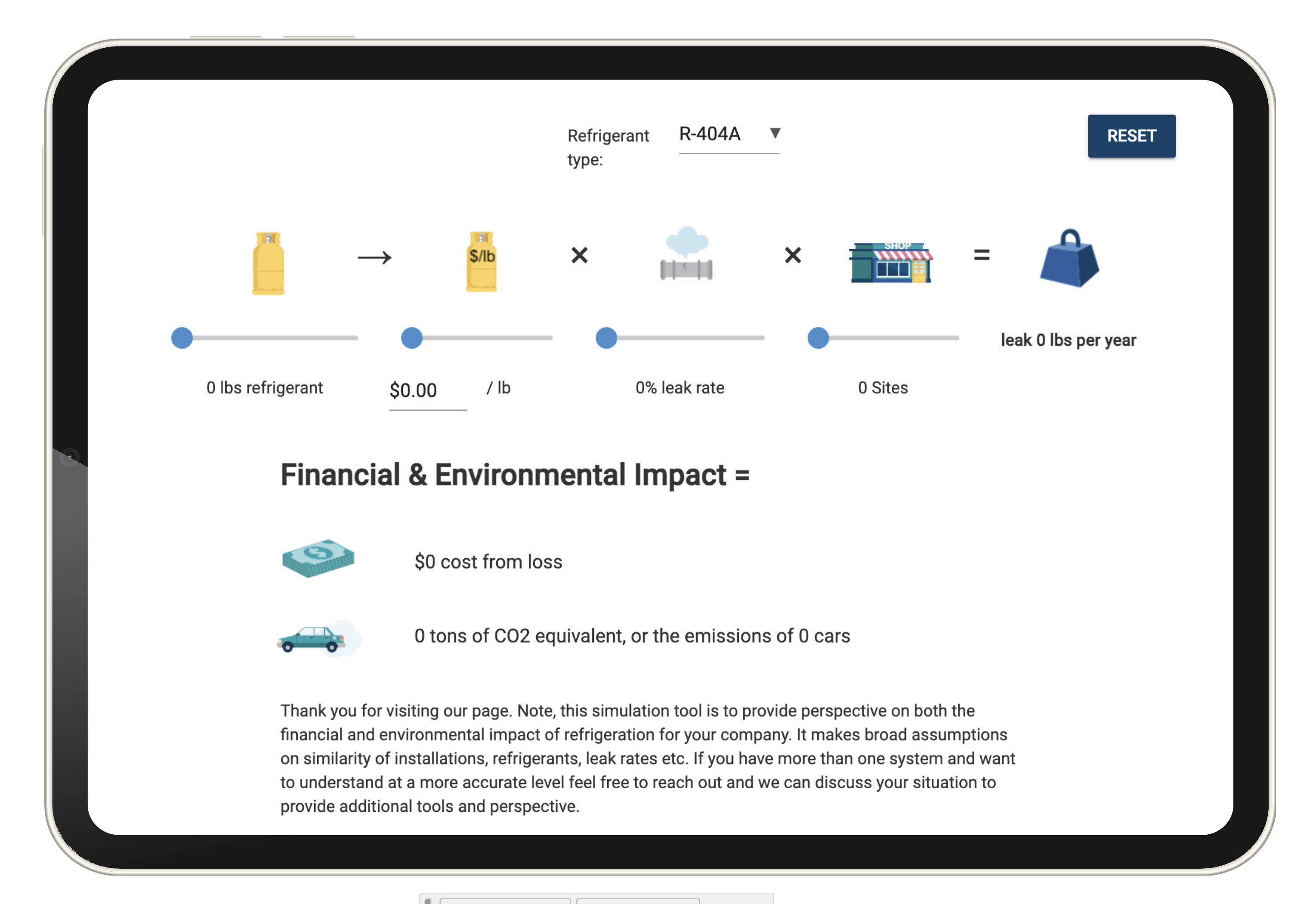The American Innovation and Manufacturing Act (AIM) rule authorizing the Environmental Protection Agency (EPA) to manage climate-damaging hydrofluorocarbons (HFCs) focuses on refrigerant management and the mandatory use of automatic leak detection (ALD) to reduce environmental impact. It is likely your company may not yet have a solution in place to meet the new rule. While these regulations will affect you, don’t panic. Despite the changes and market complexities, compliance can be achieved by complementing your existing portable or previously installed direct leak detection system with an indirect method. This approach is an efficient, high ROI solution that allows you to utilize your current setup while making a modest investment at a lower cost, using both methods. While direct detection ensures the protection of personnel and can help locate leaks, indirect detection monitors the entire system 24/7, giving detailed visibility of refrigerant levels and system performance.
Some consultants may advocate significant capital investments, including a major refrigeration equipment remodel, to use natural refrigerants. At times, this large investment is warranted. With AIM Act regulations that limit supply, we are already seeing a phase down of HFCs production and consumption, which is facilitating a transition to new refrigerants that can lead to significant carbon savings. But when it comes to effectively reducing the overall use of HFCs, it doesn’t matter what type of refrigerant you use, so long as you’re using ALD as part of your refrigerant management. With ALD, you can detect leaks up to 60 days in advance, allowing you to address them before they escalate or cause product loss. Therefore, a complete overhaul of your existing refrigerant management system is not necessary in many cases. Instead, take a simplified approach - ALD management and an improved maintenance program, which can save you money, help the environment, and enable you to meet the new requirements,
Indirect Methods Complement Your Existing Solution
An Indirect leak detection method is often used in combination with direct leak detection methods to provide a comprehensive approach to leak management. These two methods complement each other effectively. Direct methods, such as room controllers, (also known as fixed detectors), analyze the presence of refrigerant in the air to detect a leak, whereas portable detection is used for on-site leak detection. In contrast, indirect methods rely on permanent level measurement and the monitoring of operating data. By combining physical measurements with operating data, the system learns the normal operation of the plant and establishes a reference level. These algorithms use this reference level along with the data on pressures and temperatures to detect leaks and alert operators 24 hours a day, seven days a week. Indirect ALD and proactive remote monitoring solution analyzes the system's performance or environment and indicates a potential leak before it becomes a problem. This method will then be used to check that the level remains stable, i.e. that the leak has been repaired, and that there is no other leak that was not identified during the on-site leak search.
Indeed, direct methods are effective for locating leaks, but come with certain limitations. They require numerous sensors, each of which needs to be calibrated, installed, and maintained. These methods are also difficult to use outdoors or in drafty room conditions, which can distort the analysis. While this approach enhances safety and helps in pinpointing leaks, it does not provide information on the size of the leak, the quantity of refrigerant lost, or whether there are additional leaks. Furthermore, if a leak occurs in an area without a sensor, it may go undetected. Also, while manual detection is the only way to determine precise locations of leaks, it’s time-consuming and costly. In conclusion, relying solely on direct methods, which prioritizes safety for systematic leak detection, can lead to a false sense of security or become expensive to operate.
IoT-enabled Real-time Monitoring
Indirect leak detection examines the system over time by taking snapshots at different intervals and comparing it to a learning period. Continuous 24/7 monitoring helps identify changes that may indicate a leak. As data is collected, it determines whether the volume within your tank is being affected, indicating that you are losing refrigerant. When a leak is detected, the system verifies it and sends an alarm, with indications of the severity of the leak, to help refrigeration professionals prepare for their intervention. They have access to a monitoring interface with historical level curves, prompting you to take action. The algorithm is the critical component in detecting all leakages. It allows you to be proactive and react immediately. And it does so quickly, avoiding product losses. For example, it will detect slow leaks that are hard to detect. Let’s face it, when cold room temperatures rise, it's already too late.
Indirect Leak Detection with Web Platform
Some indirect leak detection methods also have a web app with a centralized dashboard and alerts. This dashboard can be managed by your administrator, who can have secure user access. Based on real-time data, they can make fact-based decisions instead of guessing as to where a leak might be. This is important because you can prioritize interventions depending on the level remaining in the reservoir and therefore the potential risk of production stoppage. As a result, maintenance efficiency is improved, and technicians' work is simplified. They can concentrate on existing leaks, and no longer waste time with comprehensive leak checks, without knowing whether there really is a leak. This is overall a better plan that’s manageable.
Investment Consideration and Determining How Much Your Current System is Costing You and the Environment
One important consideration when investing in an indirect (or direct) leak detection system is to understand the strengths and effectiveness of the ALD technology that you are purchasing. This is to say not all indirect ALD solutions are the same; some questions to ask 1) how sensitive is the system to leaks, 2) will the technology work on all refrigerants and does the company have experience in your industry 3) what is the install process and do you need to modify for different installations?
ALD methods offer a strong return on investment for companies under six months and sometimes less, as soon as the first leak is detected. ALD methods allow you to comply with regulations, save money, improve plant performance, and make a huge environmental impact, and more.
An Impact Calculator on Matelex’s website offers an estimate of both the financial and environmental impact of your current leak management system by simply inputting the type of refrigerant you’re using, how much you’re paying for it, what your leak rate is, and the number of sites. It will calculate how many pounds of CO2 the environment will have to absorb from your installations per year and will display the amount of money in loss of refrigerant and what the pounds translate to in CO2-equivalent.

https://www.matelex.com/us/solutions/impact-simulator/
So do the math and take note of the requirements: Installation of ALD systems on commercial refrigeration and industrial process refrigeration appliances installed prior to the effective date of the final rule with a charge size of 1,500 lbs. or more – comply within one year after the date of final rule publication. Those same appliances installed on or after the effective date of the final rule with the same charge size – comply within 30 days of appliance installation.
Marion Lazzarotto, Marketing and Customer Experience, Matelex
Gary Epright, US Technical Advisor, Matelex
David Reitz, US Business Development and Strategic Partnerships, Matelex
Matelex, based in France and now running US pilots, has developed award-winning technologies for managing commercial refrigeration systems. With over 4,000 installations historically worldwide, the company has demonstrated a 5 percent global leak rate for its customers, much lower than industry averages. Currently, its patented products are responsible for supervising 1,200 stores. In terms of CO2 equivalent emissions, that amounts to 1,649,274 metric tons being monitored.


